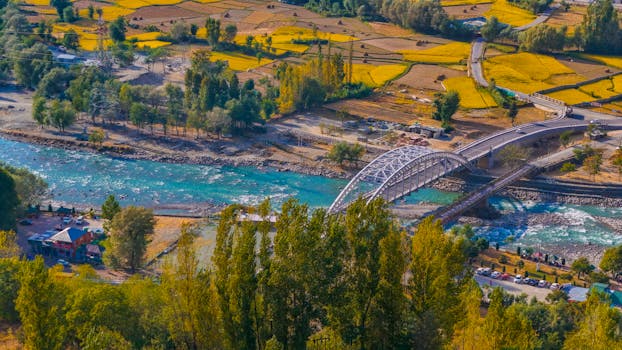News
The Coldest Temperature in India: A Chilling Exploration

-
Table of Contents

India, known for its diverse climate and extreme weather conditions, experiences a wide range of temperatures throughout the year. From scorching summers to freezing winters, the country showcases the true essence of climatic diversity. In this article, we delve into the coldest temperature ever recorded in India, exploring the regions that experience extreme cold, the impact of these temperatures on the local population, and the measures taken to combat the harsh winter conditions.
The Regions of Extreme Cold
India, with its vast geographical expanse, encompasses several regions that witness extremely low temperatures during the winter months. The northernmost state of Jammu and Kashmir, nestled in the Himalayan range, experiences bone-chilling cold due to its high altitude. The towns of Leh and Dras in this region have recorded some of the lowest temperatures in the country.
Another region that experiences extreme cold is the state of Himachal Pradesh, also located in the Himalayas. The towns of Keylong and Kalpa in this state have witnessed sub-zero temperatures, making them some of the coldest inhabited places in India.
The northeastern states of Arunachal Pradesh, Sikkim, and Nagaland also face severe cold during the winter months. The high altitude and proximity to the Himalayas contribute to the freezing temperatures experienced in these regions.
The Coldest Temperature Recorded
The coldest temperature ever recorded in India was in the town of Dras, located in the Kargil district of Jammu and Kashmir. On January 9, 1995, the temperature dropped to a bone-chilling -60 degrees Celsius (-76 degrees Fahrenheit). This record-breaking temperature made Dras the second coldest inhabited place on Earth, after Oymyakon in Siberia.
The extreme cold in Dras can be attributed to its high altitude of 3,280 meters (10,761 feet) above sea level and its location in the Himalayan region. The town is surrounded by snow-capped mountains, which contribute to the freezing temperatures experienced by its residents.
Impact on the Local Population
The extreme cold temperatures in regions like Dras have a significant impact on the local population. The harsh winter conditions make it challenging for people to carry out their daily activities. The freezing temperatures affect agriculture, making it difficult for farmers to cultivate crops. The lack of vegetation during the winter months also poses a challenge for livestock, leading to a scarcity of food for animals.
The cold weather also affects the infrastructure in these regions. Roads and highways often become impassable due to heavy snowfall, cutting off these areas from the rest of the country. Power outages are common during winter, as the extreme cold can damage electrical infrastructure.
Furthermore, the health of the local population is at risk due to the cold temperatures. Frostbite and hypothermia are common ailments faced by residents during the winter months. The lack of proper heating facilities in many households exacerbates the health risks associated with extreme cold.
Measures to Combat Extreme Cold
The Indian government, recognizing the challenges posed by extreme cold, has taken several measures to combat the harsh winter conditions in these regions. Some of these measures include:
- Providing financial assistance to farmers to help them cope with the challenges of agriculture during winter.
- Improving infrastructure, such as roads and highways, to ensure connectivity even during heavy snowfall.
- Setting up relief camps and shelters for homeless individuals during the winter months.
- Distributing warm clothing and blankets to the underprivileged sections of society.
- Encouraging the use of alternative heating methods, such as solar heaters and energy-efficient stoves, to reduce the dependence on traditional methods that contribute to air pollution.
Q&A
1. Q: What is the coldest temperature ever recorded in India?
A: The coldest temperature ever recorded in India was -60 degrees Celsius (-76 degrees Fahrenheit) in the town of Dras, Jammu and Kashmir, on January 9, 1995.
2. Q: Which regions in India experience extreme cold?
A: The regions of Jammu and Kashmir, Himachal Pradesh, and the northeastern states of Arunachal Pradesh, Sikkim, and Nagaland experience extreme cold during the winter months.
3. Q: How does extreme cold impact the local population?
A: Extreme cold affects agriculture, infrastructure, and the health of the local population. It makes farming difficult, disrupts transportation due to snowfall, and poses health risks such as frostbite and hypothermia.
4. Q: What measures has the Indian government taken to combat extreme cold?
A: The Indian government has provided financial assistance to farmers, improved infrastructure, set up relief camps, distributed warm clothing, and encouraged the use of alternative heating methods.
5. Q: Is Dras the coldest inhabited place in India?
A: While Dras is one of the coldest inhabited places in India, it is not the absolute coldest. The town of Leh, also in Jammu and Kashmir, experiences similarly low temperatures.
Summary
The coldest temperature ever recorded in India was a bone-chilling -60 degrees Celsius (-76 degrees Fahrenheit) in the town of Dras, Jammu and Kashmir. This extreme cold, experienced in various regions of India, has a significant impact on the local population, affecting agriculture, infrastructure, and health. The Indian government has implemented measures to combat these challenges, including financial assistance to farmers, infrastructure improvements, and the distribution of warm clothing. Despite the difficulties posed by extreme cold, the resilience of the Indian population shines through as they adapt and overcome the harsh winter conditions.

